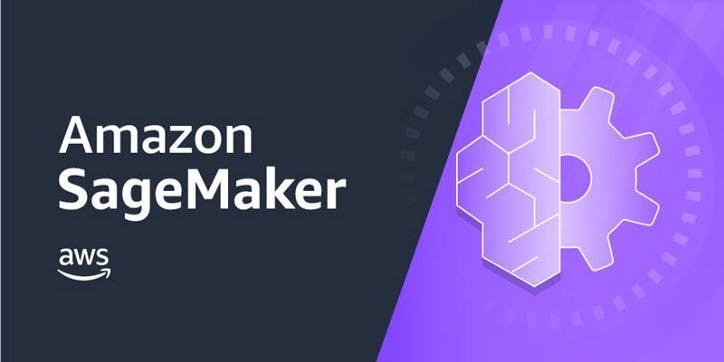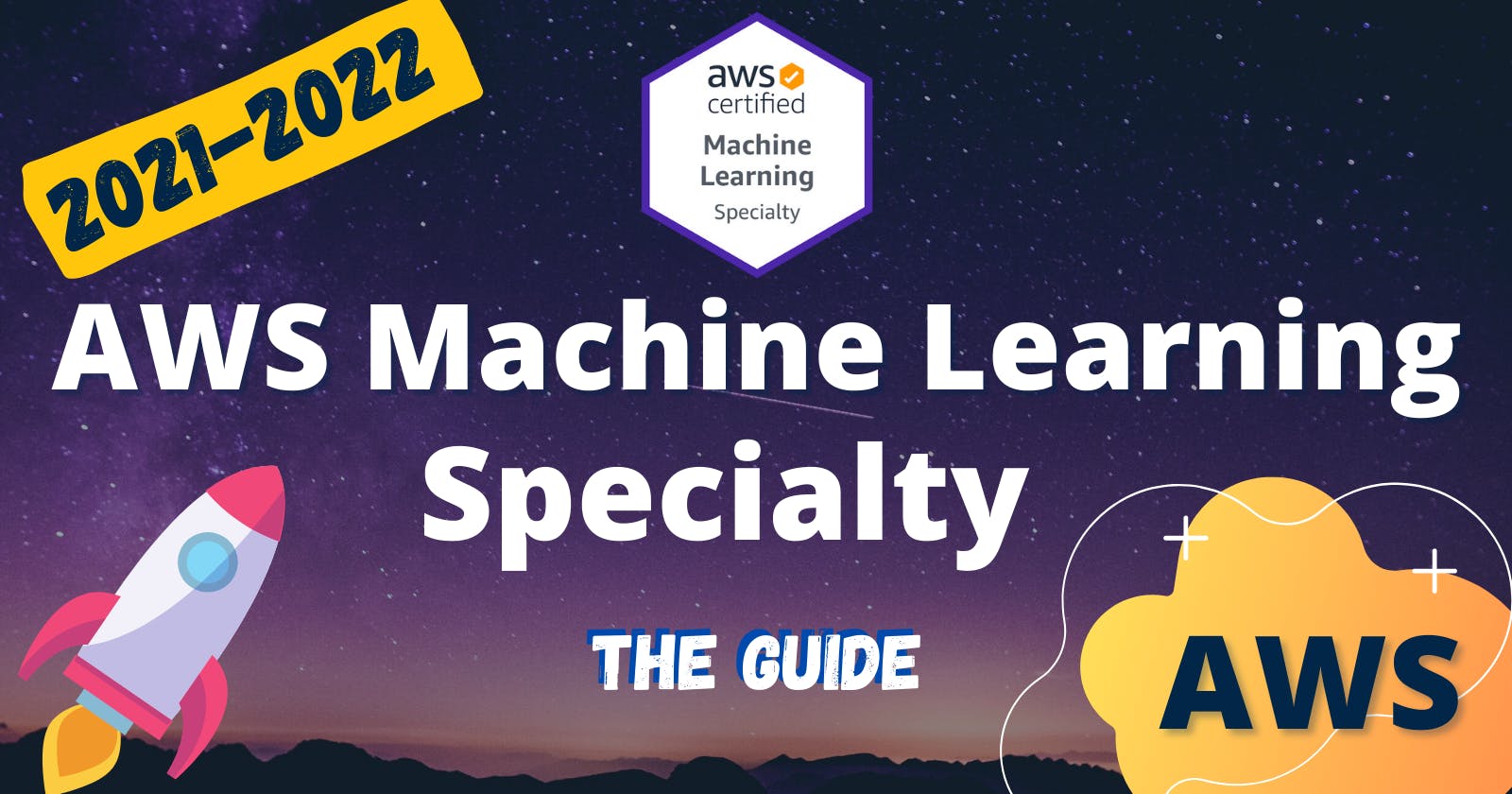How I passed the AWS Machine Learning Specialty certification
A practical guide to enjoy the learning journey
Table of contents
How the hell did I end up in the exam room?
Two years ago, machine learning meant nothing to me and Artificial Intelligence was just some hyped word with disparate college memories.
However, my interest was growing as I was reading more and more interesting articles on these topics. One day I found out AWS was releasing a small course on Coursera about Machine Learning: Getting started with AWS Machine Learning.
I watched the videos, enjoyed the examples and passed the Quizz. I needed more material, my curiosity was growing and I wanted to practise, diving into the machine learning ocean and discover how interesting the fishing could be!
Some days later, I enrolled into the Standford ML course by Andrew Ng where I learned so much about theory but also some examples and practical use cases: everything to be able to be autonomous in my future learnings.
At that point, I started to think about going after the AWS Machine Learning Specialty exam. Following the same principle as for my Architect certification, I wanted to use the "exam goal" to explore even more about machine learning, the tools and the best practices used in the professional environment.
And here I am, a few months later, babbling about this exciting experience! I want to share part of this feeling with you, describing my own journey and hoping for you to enjoy it as much as I did!
What's on the menu?
 Photo by Jessie McCall on Unsplash
Photo by Jessie McCall on Unsplash
The first thing to do when starting such a journey is to find a map. You wouldn't go to the Amazon forest without one, right?
In your case, you want to go to the Machine Learning Specialty page and check in particular the exam guide. This simple page will help you understand how the evaluation is performed and what are the needed skills.
Let's hear the master voice:
The exam validates a candidate’s ability to design, build, deploy, optimize, train, tune, and maintain ML solutions for given business problems by using the AWS Cloud.
Now, the practical way! In November 2021, the assessed skills were spread like the following:
- 20% - Data Engineering
This domain includes everything related to data ingestion, transformation and storage. Data is your main asset in this journey, you want to treat it well and build a nice and genuine friendship!
Some services/topics you should explore: Glue, Kinesis, S3, Spark...
- 24% - Exploratory Data Analysis
Here we are talking about data preparation for modelling, feature engineering and data analysis (understand and visualize). This is the part where your AWS skills are not going to help you a lot and where you should develop your data-science and analytics knowledge. Improve your relation with data by adding some analytics friends and you should be good!
Explore some notions like: data cleansing methods, feature reduction, learn to choose visualizations...
- 36% - Modelling
This domain will check your abilities to transform a business problem into a machine learning one (or not if it is not needed!). You will need to learn how to choose the proper model, how to train it, how to optimize hyperparameters, and of course, how to evaluate the performance of your model. This is a very important part of the exam and it covers a broad range of topics. To carry on with our metaphor, this is the moment you ask your data some context, some help to be able to provide the best means of transport to the target destination...
You should definitely get some real-world experience (projects or use cases examples) to help you analyse the situations and take the right decision.
- 20% - Machine Learning Implementations and Operations
We know how to get and store the data, prepare and analyse it and choose the right method to use for the use case. Nice! But how will you actually build your solution in order to provide and optimize the business value?
This last domain is focused on choosing the right services to provide the right amount of performance, availability, scalability, resilience and fault tolerance. It includes also the strategies to deploy the model in production and a bunch of security best practices.
Time to have fun ! You did everything right until now, it's time to show that you know how to make use of all this work.
This is almost the end of the road: deploy the model to production, monitor it, adapt it, maintain it. Make it work!
Good program isn't it?!
Anyway, considering the large perimeter of the exam, remember that in order to pass, you will need to have a good knowledge and experience about machine learning but also about AWS services. On the other hand, don't be scared, the journey is at least as enjoyable as the congrats email when you pass and you will soon be able to navigate between all the AWS ML services.
For more practical information before we really start the journey, the exam is 180 minutes long and will cost you 300USD.
That said, let's see now how you can organize your learning.
Sagemaker my love 🥰

Before talking about my recent love story (is it a bit early for that?!), I would say that a good start for this certification is the AWS Machine Learning path.
Weither you are an beginner or the absolute expert, it will give you a large overview of the exam and will build the needed foundations to organize your learning depending on your strengths and weaknesses.
Now, let's come back to my (and probably your) future true love during this journey: Amazon Sagemaker!
A proud wizard once told me:
Read the Sagemaker documentation... a lot! ~ A proud wizard, once.
This should clearly become your main source of truth. Start by... the getting started! Navigate through the sections and take notes!
Learn all about the built-in algorithms and the way you can fine-tune them using hyperparameters. How to choose and set the objectives? Which data source can be plugged? What is the best way to deploy? How to secure Sagemaker notebooks...
The list of question to clarify is very large at the beginning but don't feel overwhelmed. Just start somewhere and the rest will follow.
Courses
Beside the official documentation, you will want to follow a specific course to guide you through the exam. Here are some I found interesting during my learning.
I used them as a starting point from which I could easily explore in detail the complex notions I didn't get at first sight.
Some videos to watch
AWS Power Hour Machine Learning serie
This is your call to get some more real-life use cases. As it can be hard to tackle every topic of the exam on your daily job or side projects, this is the way to get some experience from real projects (isn't transfer learning one of the topic to master?!). Here is a sample of what you'll be able to learn in the AWS Power Hour Machine Learning serie:
- Textract
- Comprehend
- CodeGuru
- Kendra
- Personalize
- ...
re:Invent sessions
This is true for one and every AWS certification but re:Invent sessions can be very informative to dive into some specific AWS tools and I particular Sagemaker capabilities.
Here are some sessions I found useful:
- Amazon SageMaker deep dive
- Introducing Amazon SageMaker Studio
- Amazon SageMaker for Fraud Detection
- Building, Training and Deploying Custom Algorithms Such as Fast.ai with Amazon SageMaker
Julien Simon's Book
 I could not close this article without talking about the great book Learn Amazon SageMaker by Julien Simon.
It guides you through the full Amazon Sagemaker process by providing some implementation examples and challenges. It covers every aspect of a professional machine learning project and elaborate about good practices and tips to help you navigate when moving your models to the next level, to the production environments.
I could not close this article without talking about the great book Learn Amazon SageMaker by Julien Simon.
It guides you through the full Amazon Sagemaker process by providing some implementation examples and challenges. It covers every aspect of a professional machine learning project and elaborate about good practices and tips to help you navigate when moving your models to the next level, to the production environments.
Definitely a must read for this exam and for your next challenges in professional environments!
Finishing straight: readiness and the practise tests
Here you are, with all this courses and videos in your head. You did some hands-on labs and you learned about some real world use cases. But I know you don't feel so confident yet... And that's normal!
AWS exam readiness course will help you identify some of the remaining topics you need to deepen. It gives an overview of all topics for the exam without taking to much time... worth it!
Next step is for sure to check the available practise tests. They are even more important for this exam than for other certifications: you need to learn how to read, understand and tackle the questions. You will face long and complex question during more or less 3 hours, you better feel prepared and used to the format!
- AWS Sample Exam Questions
- AWS Practise exam
- Whizlabs tests (affiliate link)
- A Cloud Guru course final practise test
- Udemy practise test
There are really very few of quick questions you could find at the associate level. Most of the questions are in fact some real life use cases with 5 to 15 lines to read before even looking at the questions. This needs a little bit of training to stay focused and know what information to extract from the question.
To complete your learning material, I also found these resources useful:
- This Trello board by Kush Bhatnagar
- The activation function blog
- ACloud Guru Challenge: ML on AWS
 Photo by Cameron Venti on Unsplash
Photo by Cameron Venti on Unsplash
The exam is a little marathon not a sprint
Now you are almost ready. Let's take some time to reflect on the exam itself and how to think about it to get the best chances.
Before the exam, try to get a good night sleep and relax as much as you can. The exam is going to last 3 hours and you don't want to feel overwhelmed right after the beginning!
During the exam, take the time to read question and create a virtual representation of the problem in your head. This is the key to make sure you understood the problem well enough to think about a solution.
A lot of questions will propose you several valid answers, you'll need to take note of all critical requirements (cost, simplicity, efficiency, liability, real-time...) to find the best answers. Don't panic if you feel like some questions are really hard to answer: sometimes AWS team include some slightly out of scope questions to explore future question ideas or to assess the common knowledge about some recently launched services. These questions won't be part of your rating but you will not know which ones they are.
Ok, I almost forgot the last task before the exam: you need to schedule the exam with Pearson Vue or PSI, on-site or from home, select your preferred language... This won't be the hardest part of the journey but don't be afraid to book your exam and set a deadline for your last learning sessions. You will never be ready if you listen to yourself!
Just go for it!

Conclusion
Is it already time to conclude? Hum... so what can we say?
This one is hard. Hard but not impossible!
I learned a lot in the process and I would definitely recommand to pursue this certification path if you are interested in machine learning. It will give you some practise and material to deepen your knowledge (even if you don't want to take the exam).
With a good dose of preparation, you will get the possibility to become officially part of the AWS ML family and to get opportunities in one of the most demanded field of at least the 5 next years! Isn't this interesting?
This exam is also really complete and will ask you to practice and learn about real uses cases. You are not protected from having some fun along the way, during your learning... As always, I hope I managed to share some of my feelings with you and that you are ready to start this awesome learning journey.
I wish you good luck!
Feel free to reach me on Twitter FlolightC to keep me updated about your AWS machine learning journey or to ask me questions ! I’m always happy to discuss with you!

